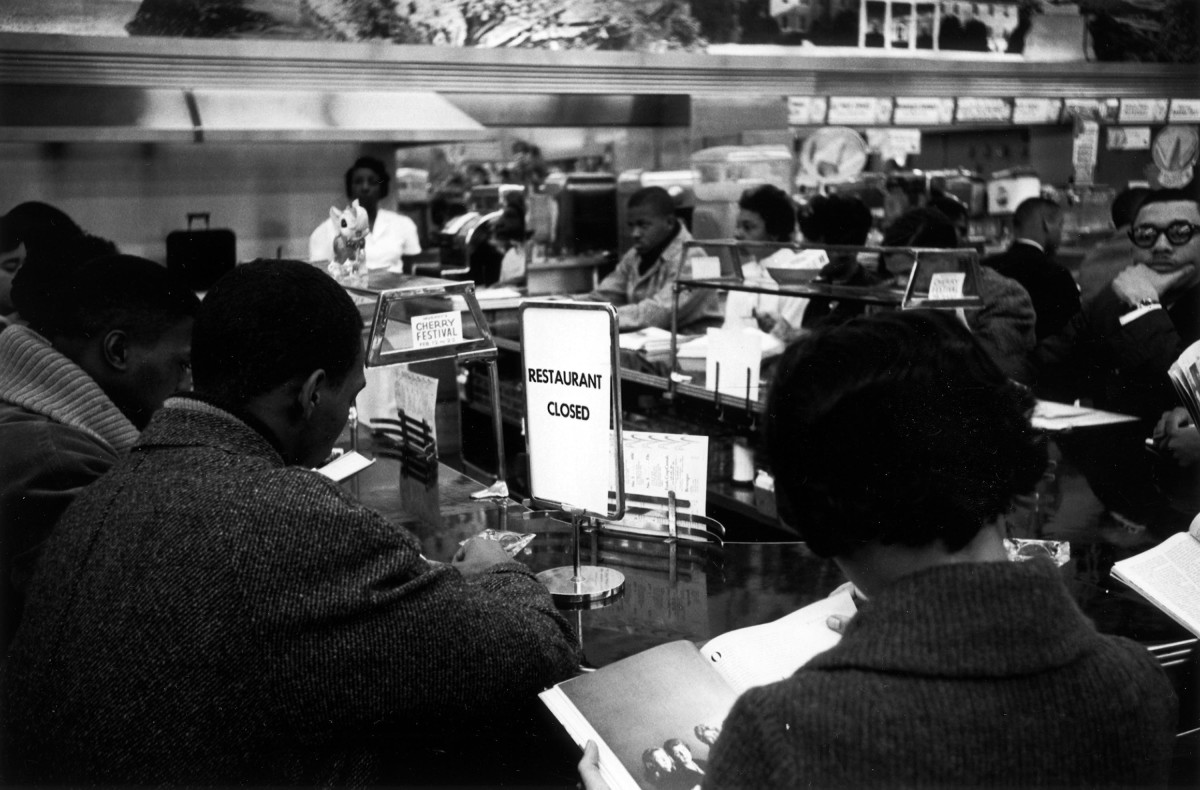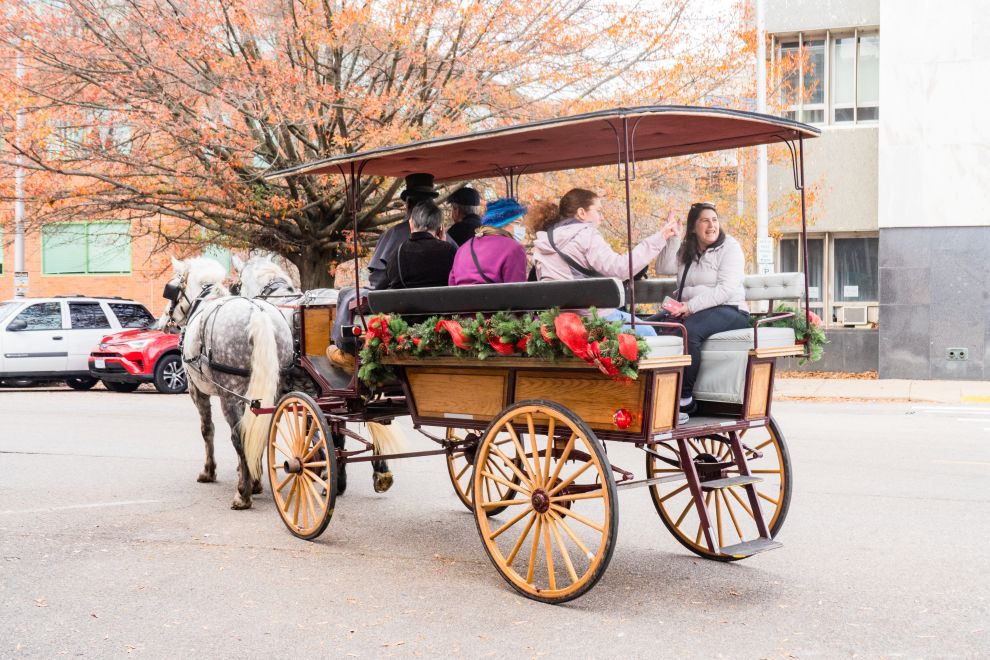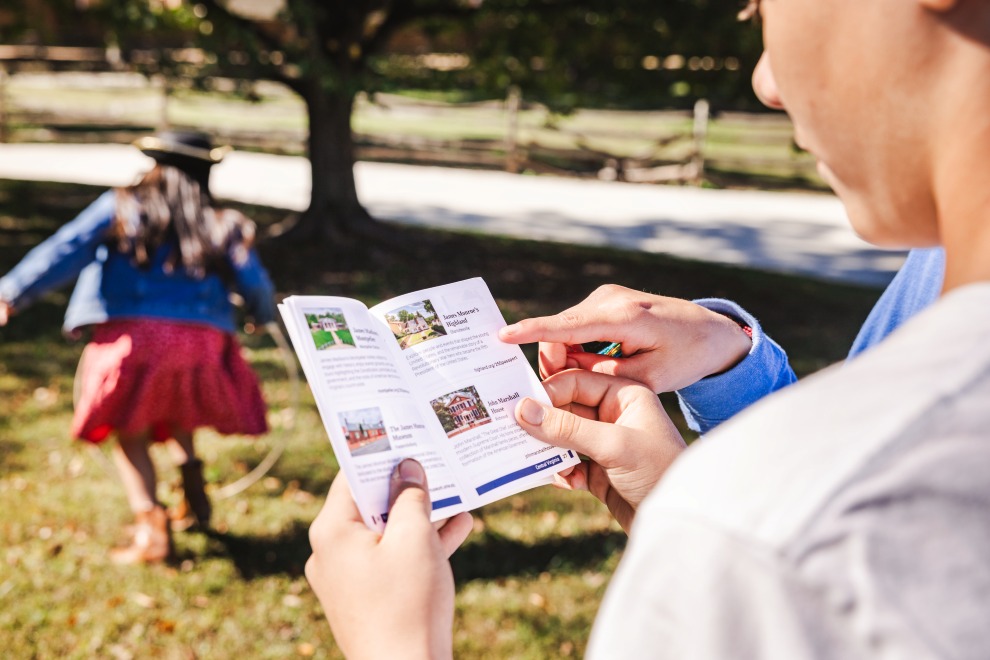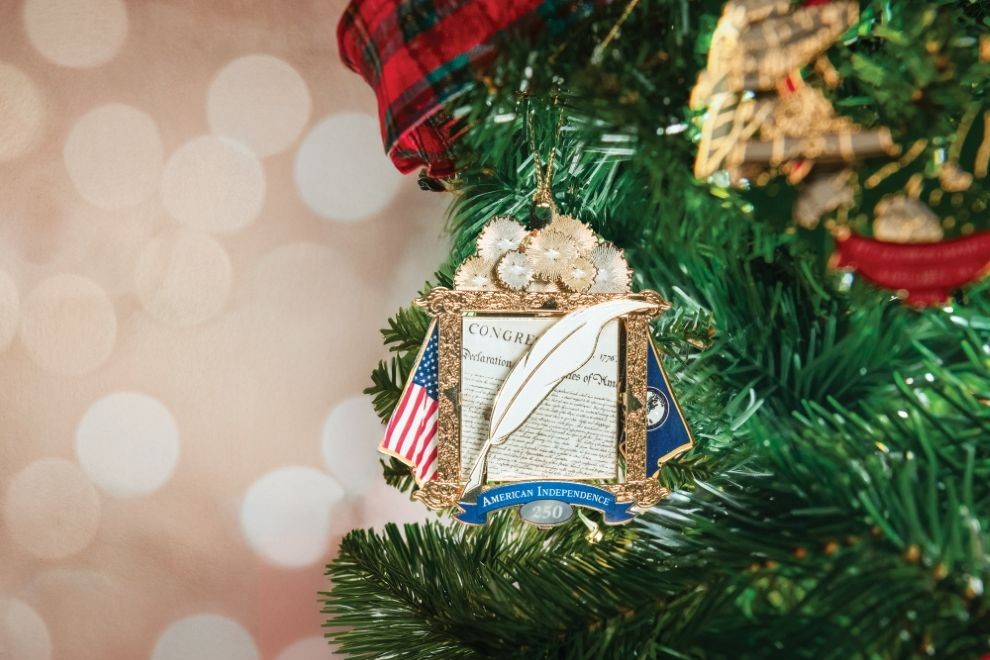By New Year’s Day of 1960, Richmond remained a segregated city. Most aspects of daily life for African Americans, from education to entertainment to shopping, were governed by restrictive rules. These rules also dictated where Richmonders of color could eat.
Restaurants maintained separate seating areas for black citizens or limited them to take-out.
On February 20, 1960, however, a group of students from Virginia Union University marched from their Lombardy Street campus to Woolworth’s Five & Dime on Broad Street. There, the students filled the whites-only seats and waited to be served. At lunch counters across the country, student protesters filled seats with the intention of being served. They were not, but as the seats were occupied, no customers were – and the businesses lost money.
The management of this Richmond store responded by closing its doors. By February 22, the movement had grown over to 150-strong. Richmond City policemen patrolled Broad Street with dogs, while protesters occupied many eating establishments and demonstrated on sidewalks, carrying signs reading: “Can’t Eat… Don’t Buy.”

As 1961 drew to a close, this retail chain and other stores had desegregated their lunch counters. However, not all store owners changed their policies. It took the Civil Rights Act of 1964 to ban racial segregation in schools, at the workplace, and by facilities that served the general public.
Anderson Collection, The Valentine; February 20, 1960, V.61.5





